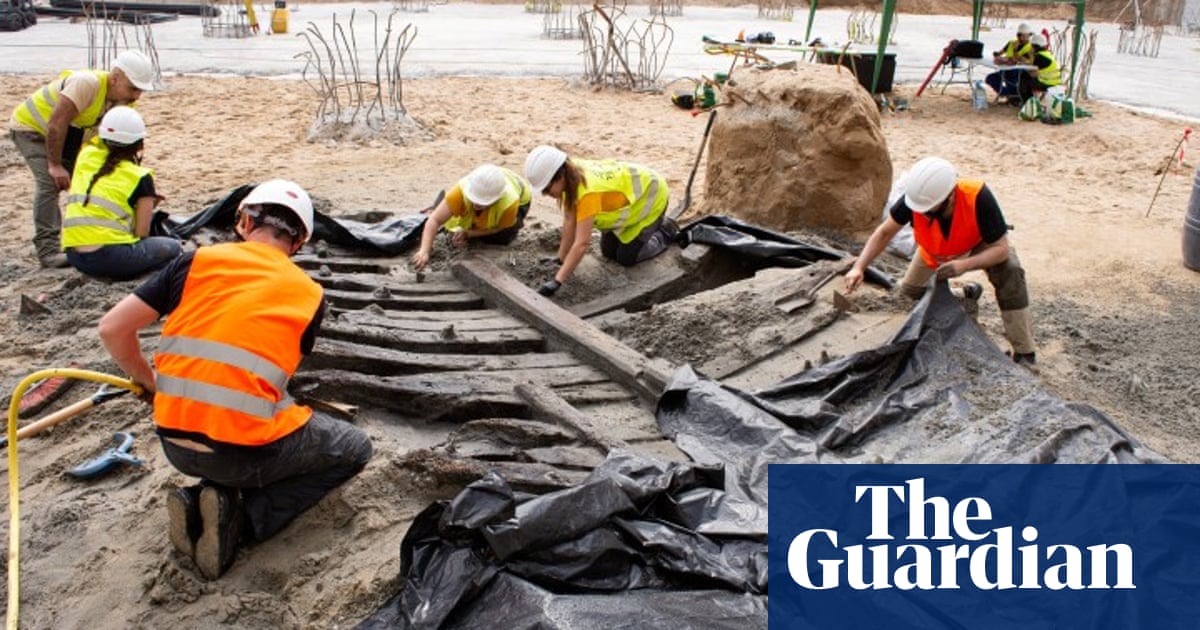Archaeologists excavating the site of a former fish market inBarcelonahave uncovered the remains of a large medieval boat that was swallowed by the waters off the Catalan capital 500 or 600 years ago.
The area, which is being dug up in order to build a new centre dedicated to biomedicine and biodiversity, has already yielded finds ranging from a Spanish civil war air-raid shelter to traces of the old market and of the city’s 18th-century history.
But earlier this month, archaeologists came across the ruined stern of a big vessel that may have sunk during a storm in the 15th or 16th centuries, when that part of Barcelona was still under the sea.
A large fragment of the boat, 10 metres long and three metres wide and crossed by more than 30 curved wooden ribs, has been uncovered at a depth of 5 metres below sea level.
The structure was held together by a mix of wooden and iron nails. The construction is typical of the medieval boats that were found in the Mediterranean and throughoutEuropefrom the middle of the 15th century.
“We’d thought some archaeological boat remains might turn up on this site, which is near the port and the artificial stone quay that protected the port, and which was a working zone in the 15th and 16th centuries,” said the lead archaeologist, Santi Palacios. “Two years later, we’ve been lucky enough to find a boat.”
The surviving wood of the boat – which has been named the Ciutadella I after the nearby Ciutadella park – is very fragile and has been kept damp and covered with the sand in which it lay for centuries to help prevent further deterioration.
“The wood has to be kept constantly damp so as to keep it in a good state,” said Delia Eguiluz, a restorer. “When we move it, we’ll have to dismantle it piece-by-piece so we can continue our research.”
The team is mapping the site, labelling all the pieces and taking samples from the boat. In the next phase, the wreck will be taken to a special facility where it will be treated with water-soluble wax to reinforce and preserve the structure.
Sign up toThis is Europe
The most pressing stories and debates for Europeans – from identity to economics to the environment
after newsletter promotion
Experts hope its old timbers and nails will help shed light on how boats were built in the medieval period. Its discovery comes17 years after another 15th-century boat, known as Barceloneta I, was found near a railway station in the city. Unlike the Ciutadella I, that boat was Cantabrian, rather than Mediterranean.
The team believes that analysis of the newly discovered vessel’s wood and resin will help establish where it was made.
“This is a very important discovery,” said Palacios. “It’s not just about finding one boat because we now have two examples of perfectly documented naval construction in the city of Barcelona.”
